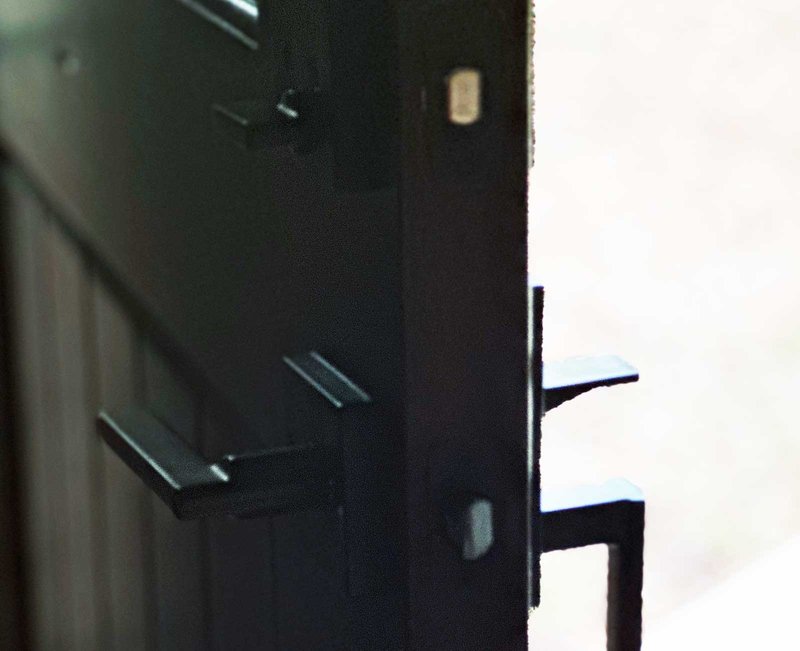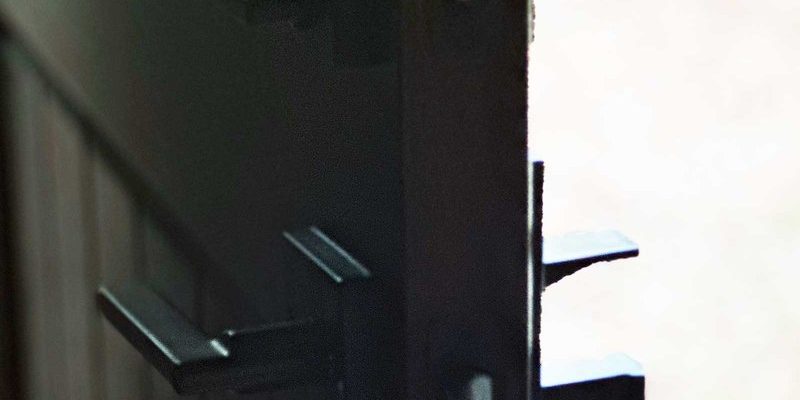
Honestly, most folks don’t even know what a latch follower is until it acts up. But whether you’ve got a popular Schlage, Kwikset, or Emtek handleset, this little internal piece is the unsung hero that makes your door latch actually move. When things go sideways, it can mess with your lock’s function, throw your security off, and frankly, test your patience. Let me break down how this system works, why it sticks, and, most importantly, what you can do to fix your stuck latch follower without having to call a locksmith.
What Is a Latch Follower and Why Does It Matter?
You might be wondering—what exactly is this latch follower, and why should I care? The latch follower is a small but mighty part inside most exterior handlesets. Its main job is to connect the handle action to the latch bolt, which is that part that slides in and out of the door edge when you turn the handle or thumbpiece.
Think of it like the relay runner in a race—the handle starts the movement, the follower grabs the “baton,” and the latch finishes by pulling back so you can open the door. If the follower gets stuck, that whole process grinds to a halt. Suddenly, turning the handle doesn’t do anything, or the latch gets halfway and jams.
This matters for more than just convenience. A jammed latch follower can:
- Keep you locked out or in
- Mess with your lock code or keypad system (if integrated)
- Wear down other parts of your lock more quickly
- Make it easy for someone to force the door
So, whether you’re using a high-end Yale smart lock, a classic Schlage deadbolt, or even an older Baldwin model, a stuck follower isn’t just an annoyance—it’s a part of your home’s security you don’t want to ignore.
Why Does the Latch Follower Get Stuck?
Here’s the thing: the latch follower isn’t something most people ever see. It just sits there doing its job—until it doesn’t. But why does it get stuck in the first place?
There are a few common reasons:
- Dirt and Debris: Over time, dust, grit, or even tiny wood chips can sneak inside the lock mechanism, making the follower sticky or hard to move. If your handleset is on an exterior door, wind and weather can speed this up.
- Lack of Lubrication: Like any moving part, the follower needs to slide smoothly. If it dries out, it can stick, grind, or even seize. In older locks, the original lubricant can just gum up and turn into a sticky mess.
- Misalignment or Damage: If the handleset was installed incorrectly, shifted with the house, or took a hard hit, the follower can get pinched or bent. Sometimes, forcing the handle when the latch won’t retract only makes things worse.
- Worn or Broken Springs: The latch mechanism depends on tiny springs to return everything to position. If they break or lose tension, the follower can jam or just flop in place.
Whenever you’re troubleshooting a stuck latch follower, it’s smart to keep these causes in mind. It’ll help you test solutions more logically—and keep you from just muscling the handle and making things worse.
How to Tell If the Latch Follower Is Stuck
At first, a sticky latch might seem like a mystery. Is it the handle? The lock? Just the weather? But there are a few signs that point straight to the latch follower as your troublemaker.
- Handle Spins or Feels Loose: You turn the handle, but there’s barely any resistance, and the latch doesn’t budge. This usually means the follower isn’t catching.
- Partial Retraction: The latch pulls back a little, then stops—even though you’re turning the handle all the way.
- Grinding or Crunchy Feel: The handle feels gritty, rough, or makes a scraping sound. Debris or dried lubricant might be jamming things up.
- Handle or Thumbpiece Sticks: You turn to open the door, but the handle stays cocked or doesn’t spring back. This is a classic follower fail, especially if the handle itself is fine when the door is open.
Personal story: I’ve had a Kwikset exterior handle on a rental house get so gummed up with dust and pollen that the latch follower stuck every damp morning. The only solution was to open things up and get inside the lock—something I’ll show you how to do, step by step.
Steps to Fix a Stuck Latch Follower in Your Handleset
Don’t worry—you don’t have to be a locksmith to fix most stuck latch followers. The tools are basic, and the process is easier than you think. Here’s a slow, careful walkthrough.
1. Gather Your Supplies
Before you start, grab:
- Phillips and flat screwdrivers
- Needle-nose pliers
- Lock lubricant (graphite or silicone-based, not WD-40)
- Clean rag or paper towels
- Small brush (like a toothbrush)
If your handleset has a smart lock, keypad, or code system, double-check the batteries and be ready to reset or re-sync if you accidentally interrupt power.
2. Remove the Handleset from the Door
Usually, you’ll need to:
- Unscrew the interior knob or lever plate (the screws are often on the inside face of the door).
- Gently pull off the lever/knob, then remove the exterior handle section.
- Take out the screws holding the latch assembly (on the edge of the door).
Keep all screws and parts organized. I like to snap a quick photo before removing anything—handy for reassembly later.
3. Inspect and Clean the Latch Follower
Now you should see the latch mechanism. The follower will look like a small metal cylinder or block that moves when you turn the handle.
- Wipe away visible dirt, dust, or old grease.
- Use your brush to gently remove stubborn debris.
- Check for bent or broken springs, chips, or obvious damage.
If you spot actual broken pieces or a warped follower, you may need to replace that part (most hardware stores carry universal latch assemblies compatible with major brands like Schlage or Kwikset).
4. Lubricate and Test
Spray or dab a *small* amount of lock lubricant onto the moving parts—especially the latch follower and surrounding areas. Work the mechanism by hand a few times.
- Everything should move smoothly—no catching, grinding, or stickiness.
- Make sure the spring action returns the follower to its resting place.
Don’t over-lubricate. Too much can attract new dirt, starting the problem all over again.
5. Reassemble and Double-Check Operation
Reverse your steps to reinstall the handleset. Before tightening everything down, check:
- The handle moves the latch freely
- The latch fully retracts and returns
- If it’s a keyed or coded lock, the locking action still works
Try the lock with the door open first, in case something still snags. If everything’s smooth, close the door and give it a real-world test.
When to Replace the Latch Assembly or Handleset
Sometimes, a stuck latch follower is a sign of deeper wear. If your handleset has been in use for years—or if the parts are bent, cracked, or hopelessly seized—a full latch replacement might be smarter than a patch job.
You might be asking, “Can I mix and match brands, or do I need a *universal latch*?” Most modern handlesets from Schlage, Kwikset, Baldwin, and others have removable latch assemblies, and you can often swap in a universal version if your exact part isn’t available. Just make sure:
- The backset (distance from edge to the center of the hole) matches
- The faceplate is the same shape (rounded or square)
- The latch throw length is correct for your door
If you’re dealing with a smart lock, keypad, or coded entry, double-check the electronics before replacing mechanical parts. Sometimes a quick battery change or reset can fix glitches that look like mechanical failure.
If you’re unsure or uncomfortable with disassembly, most locksmiths can swap out a latch follower or handleset for less than the cost of a new lock—worth considering if you’re in a hurry or worried about security.
Preventing a Stuck Latch Follower in the Future
A little maintenance now can save you from wrestling with a jammed lock later. Here’s what helps:
- Regular Cleaning: Every few months, wipe down your handleset and squirt a little graphite or silicone lubricant into the latch area.
- Keep Dirt and Moisture Out: Install a weather strip or rain guard on exterior doors exposed to the elements. It makes a bigger difference than you might think.
- Don’t Force the Handle: If the handle feels jammed or stiff, stop and check. Forcing it can break springs or warp the follower, turning a cheap fix into a bigger repair.
- Watch for Early Signs: Sticking, dragging, weird clicking—don’t ignore them. A little attention early can prevent bigger breakdowns.
If you’re using a digital or coded lock, keep those batteries fresh and run a quick reset or code pair if things act glitchy. Often, a software glitch can mimic mechanical issues.
Comparing DIY Fixes vs. Professional Help
Let’s be honest—not every stuck latch follower needs a pro, but there are moments when it makes sense to call in backup. If you’re handy with a screwdriver and patient, most jams can be fixed in under an hour. But if:
- The handleset is antique or high-value
- It’s a commercial or multi-point lock
- You see cracked metal, lost springs, or can’t get replacement parts
—it might be time for a locksmith. Most can handle re-syncing, recoding, or even replacing parts on-site, especially for brands like Schlage, Kwikset, and smart locks. As a bonus, they’ll spot any issues with installation or alignment that an amateur might miss.
You might be tempted to swap the whole handleset for a universal or off-brand model. That’s often fine for standard doors, but if you have a connected system, digital keypad, or decorative trim, sticking with your lock’s original brand helps ensure everything lines up and works right.
Final Thoughts on Tackling a Stuck Latch Follower
Dealing with a stuck latch follower in your exterior handleset feels like a hassle, but it doesn’t have to ruin your day—or your lock. Take it slow, work step by step, and you’ll usually have things turning smoothly again without much trouble. Whether you’re cleaning out a Schlage latch, resetting a Kwikset battery-powered lock, or just giving your front door some overdue TLC, knowing how your handleset works helps you take control over stuck or sticky problems.
Keep in mind, a little regular maintenance goes a long way. If you run into a latch follower that just won’t cooperate, don’t be afraid to call for professional help. At the end of the day, your front door deserves to work as reliably as you expect—and now you know exactly what to do when it doesn’t.
